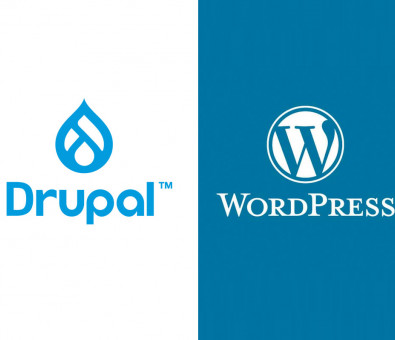Progressive Web Apps Versus Native Mobile Apps
January 11, 2020
The loss of reach of mobile apps
Important studies and analysis reveal a low use of mobile apps. For example, an investigation by Smart Travel News shows that travelers today are reluctant to install mobile applications due to different factors that go anywhere from the security of their device, the feeling of privacy of their data, and even the impact on the performance of their devices.
This reality impacts multiple industries throughout the world. According to Gartner®, it has become evident that the high development costs (on two platforms) and the marketing costs to achieve downloads are a first starting point to explore other options. Similarly, according to this consulting company, new technologies such as Progressive Web Apps and bots have begun to have a stronger hold, which – with a lower cost scope – manage to have a high impact on users.
For Smart Travel News, “these Web Apps have the design and usability of an app, but don’t require a download: they are opened from the browser (either on mobile, tablet or computer). This is a great advantage since, as we explained before, app downloads are on hiatus”. In the same way, they can “achieve faster loading and reduce data consumption, giving the user the smoothest experience possible. That is why they are being valued more and more as digital promotion tools.
What are Progressive Web Apps?
Progressive Web Apps (PWA) are the solutions currently proposed to offer users browsing websites that are like consulting a mobile application, with all the features, advantages, benefits, and performance, but without the need for an installation.
Thanks to the development of HTML5 and Javascript, today it is possible to access the mobile devices or PC’s hardware from the same browser, which has expanded the possibilities of web solutions for companies, and from which the current trend of PWA is generated.
Through the web browser it is possible to access:
- Device Locator
- Device camera
- Device microphone
- Device compass
- Device notification system
Hence the direction that companies are beginning to take to respond immediately to the needs of their users, without the need for the costly process of developing a mobile application, adapting it to the iOS and Android ecosystems, going through the validation stages of the app stores and all the security risks that it includes. It is oriented to the solution with Progressive Web Apps.
|
Functionality |
Native Mobile Applications |
Progressive |
|
Development Cost |
Tall |
Medium |
|
Marketing Cost |
High cost for download |
Medium cost for traffic generation |
|
Installation |
Requires several steps from the Android and iOS Store |
Automatically generate an icon on the device |
|
Updates |
Requires approval from the Android and iOS Stores |
Automatic |
|
Possibility of Off-Line use |
YES |
YES |
|
Interface |
Mobile |
Adapts to various devices |
|
Access to features |
Full, but requires user approval for privacy |
Partial, but requires cost |
Some of the benefits offered by PWAs are as follows:
a. Offline Access
When accessing the Portal for the first time, a portal base structure is downloaded that includes the architecture of the website, as well as updated information.
All this information is stored in the device’s internal storage, similar to a cache. When the user accesses the Portal the next time, all the information will be loaded from this cache while, in the background, the system checks with the server if there are changes in both the structure and the information.
This allows the Portal to offer information on slow Internet connections or even in the absence of a network connection, while in the background the information continues to be updated on a recurring basis.
b. Generation of APP type Access Icon
One of the greatest attractions of PWAs is that they allow the generation of an icon that is like that of an installed mobile app, being located among the other icons of the apps on the device.
When the user accesses the Portal through this icon, it’s displayed in an "embedded" web browser, that is, without the browser's own elements such as title bars, navigation bars, buttons, and others, generating, on the contrary, the feeling of using a mobile application.
This functionality is not exactly the installation of an application, nor does it go through additional downloads, but rather it’s part of the standard available for Progressive Web Apps that modern browsers already have available.
c. Incorporation in the Store (app catalogs)
The progress and importance of PWAs has been of such magnitude that the main Stores -iOS APP Store and Google Play (Android)- have begun to develop processes and methodologies to incorporate them into their app catalogues.
Because this functionality is still new (2019), there isn’t much documentation. However, a first conclusion shows that the process is easy to adapt to the Android environment. For iOS, it requires additional integrations that require the compatibility analysis of each of the features.
d. Push Notifications
Another of the attractive features of PWAs is that they allow the generation of “push” type notifications. These notifications consist of non-invasive pop-up messages that are shown to the user on their PC or device without the need to have the Web Portal open. They can be used to notify of new content or actions related to the user's account.
To carry out the implementation and adaptation of the PWA to the Portal, the recommendations of Google and Drupal must be followed through the installation and configuration of the PWA contributed modules and specific configurations in the CMS structure.
Bibliography
https://www.smarttravel.news/2019/01/10/los-viajeros-ya-no-descargan-apps-ahora/
https://www.gartner.com/en/newsroom/press-releases/2017-06-01-gartner-survey-reveals-the-number-of-enterprise-mobile-apps-is-not-accelerating
https://developers.google.com/web/progressive-web-apps/
https://medium.freecodecamp.org/i-built-a-pwa-and-published-it-in-3-app-stores-heres-what-i-learned-7cb3f56daf9b
https://medium.com/@firt/google-play-store-now-open-for-progressive-web-apps-ec6f3c6ff3c



